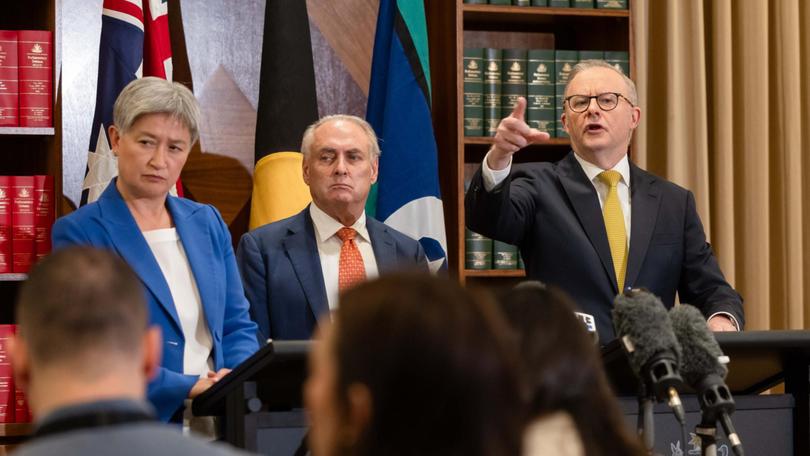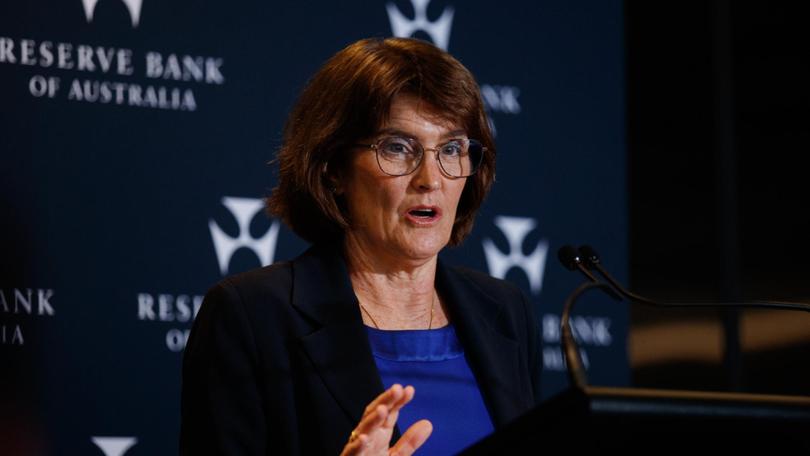How Trump’s tariffs could drive RBA rate cuts and mortgage relief for Australian homeowners

Struggling mortgage holders will get much-needed rate relief in May, as the Reserve Bank of Australia turns from fighting inflation to protecting Australia’s economic growth, a leading economist says.
AMP chief economist Shane Oliver told NewsWire while inflation will remain important to the RBA, growing the economy will be the main focus going forward.
“We’ve had three years when the inflation numbers have dominated, but now we have moved onto the trade war between the US and China which seems to be dominating,” Dr Oliver said.
Sign up to The Nightly's newsletters.
Get the first look at the digital newspaper, curated daily stories and breaking headlines delivered to your inbox.
By continuing you agree to our Terms and Privacy Policy.He pointed to the International Monetary Fund (IMF) forecasts indicating a $13bn slowdown for the Aussie economy on the back of Donald Trump’s trade war.
The US President initially announced reciprocal tariffs on just about every trading partner, before pausing them for 90 days on US bond rates rising and fears of a local recession.
The one exception to the 90-day hiatus is China, who is currently facing 145 per cent tariffs, although Mr Trump said he will reduce them in the weeks to come.
“It depends on China how soon the tariffs can come down,” he said speaking in the Oval Office on Wednesday.
The IMF report said while China and the US will bear most of the economic brunt, there would be flow-on impacts for the Australian economy, particularly if the Chinese economy slows.
The local economy was now forecast to grow 1.6 per cent this year, down from a forecast 2.1 per cent. In 2026, growth was expected to top out at 2.1 per cent, down from 2.2 per cent.
“The IMF is playing catch up to what many economists, including ourselves were thinking anyway,” Dr Oliver said.
“But it sort of confirms there are downside risks to growth here in Australia and ultimately, I think that will dominate any concerns about inflation because normally lower economic growth leads to lower inflation anyway.”
The cash rate is currently at 4.10 per cent after the RBA slashed interest rates by 25 basis points in February and held interest rates after its April meeting.
Australia’s Cash Rate 2022
The RBA will make a call on the cash rate following its May 19-20 meeting.
While Dr Oliver said markets would still focus on the upcoming inflation print, it could be quickly forgotten about as the focus remains on tariffs.
“I don’t know they’ll be able to fully offset the hit to growth, but they could help prevent it from getting any worse.

“Obviously the rise in interest rates over the last few years led to weaker economic growth. So the experience of the last few years tells us that just as higher interest rates slowed economic growth, lower interest rates will help boost it.”
The economist conceded it will take years for growth to pick up back to levels above 2 per cent, due to monetary policy taking time to flow through the economy.
“The RBA is probably able to stop things getting a lot worse, but in the next 12 months, it may be a little bit hard to cut interest rates enough to get us back to that 2 per cent path.”
DONE DEAL
Dr Oliver’s comments come as CBA economists call a rate cut in May a ‘done deal’ provided the ABS reading on April 30 comes in line with their forecasts.
On Tuesday, the CBA released its latest forecasts which expects headline inflation to fall to near the bottom of the Reserve Bank of Australia’s target range at 2.3 per cent.
CBA is forecasting the all important trimmed mean inflation rate, which the RBA uses to make its rate decisions, to increase by 0.6 per cent for the quarter to come in at 2.8 per cent for the year.
NED-9108-Monthly-Inflation-Indicator
This would also be in the RBA target band of 2 to 3 per cent.
“Following the March labour force survey, we think a 25 basis point rate cut in May is still more likely than not if the trimmed mean CPI prints in line with the RBA’s forecast,” CBA senior economist Stephen Wu said.
“If the trimmed mean CPI is in line with our forecast (or below), then we consider a rate cut in May is a done deal.”
Dr Oliver agrees, forecasting the trimmed mean to also reach 0.6 per cent for the March quarter.
“That is largely based on the monthly trimmed mean figures up to February. So it looks to us as underlying inflation is coming in a little bit lower than RBA forecasts,” he said.
Money markets agree, currently pricing in a 100 per cent chance of a 25 basis point rate cut in May.
It has also factored in a 15 per cent chance of a 50 basis point rate cut.
MORTGAGE STRESS FALLS TO LOWEST LEVELS IN YEARS
Aussies are set to get more mortgage relief at the same time as mortgage stress is falling.
Fresh figures released by Roy Morgan show 26.5 per cent of mortgage holders are currently “at risk of mortgage stress”, down 1.2 per cent from the month earlier.
The fall in stress follows the Reserve Bank of Australia slashing interest rates, which the big four banks raced to pass on.

Roy Morgan chief executive Michele Levine says the Reserve Bank’s first interest rate cut in over four years has led to two consecutive monthly falls in mortgage stress.
“After increasing for three straight months from October, the RBA’s decision to reduce interest rates by 0.25 basis points to 4.10 per cent in mid-February has now led to back-to-back monthly reductions in mortgage stress which is now at its lowest since June 2023 – when interest rates were first increased to 4.1 per cent,” Ms Levine said.
In March, 26.5 per cent of mortgage holders, 1,451,000, were considered ‘At Risk’ and this figure is projected to decrease by 13,000 in May 2025 to 1,438,000 (26.2 per cent of mortgage holders, down 0.3 per cent points) if the Reserve Bank cuts interest rates in mid-May by to 3.85 per cent.
Originally published as ‘Downside risks’: Trumps tariffs to spur on RBA rate cuts
